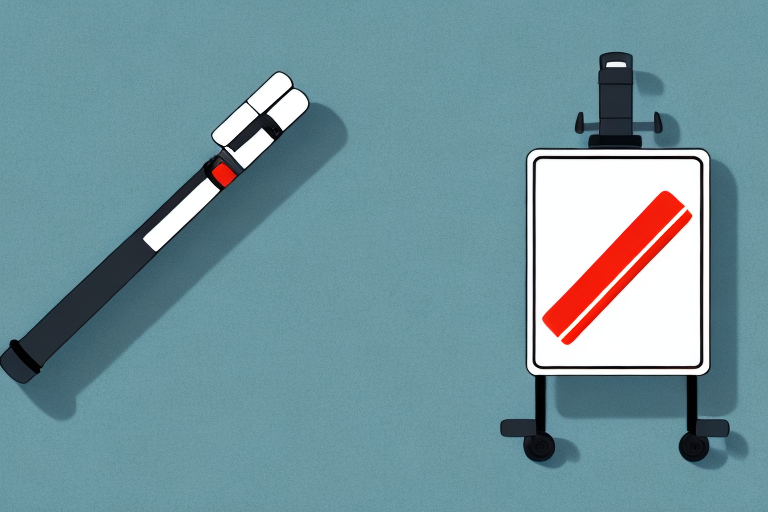If you are an athlete or fitness enthusiast, then you’ve probably heard of muscle roller sticks, also known as foam rollers. These self-massage tools have become increasingly popular in recent years, and for good reason. Muscle roller sticks are designed to help alleviate muscle soreness, reduce stiffness and improve overall flexibility. However, as with any product, not all muscle roller sticks are created equally, and using a bad one can actually do more harm than good. In this article, we’ll outline the dangers of using a bad muscle roller stick and provide tips on how to avoid injury while using one.
How Muscle Roller Sticks Work and Their Benefits
Before we delve into the dangers of using a bad muscle roller stick, let’s first look at how they work and the benefits they provide. Muscle roller sticks are designed to act as a form of self-massage, also known as myofascial release. The idea behind myofascial release is to help reduce muscle tension, increase blood flow to the muscles, and break up any knots or adhesions in the muscle tissue. By doing so, muscle roller sticks can help improve overall muscle function, reduce soreness, and promote faster recovery times between workouts. They are an affordable, convenient and effective way to improve your post-workout recovery.
In addition to their benefits for post-workout recovery, muscle roller sticks can also be used as a warm-up tool before exercise. By using a muscle roller stick to massage and loosen up your muscles before a workout, you can help prevent injury and improve your overall performance. Additionally, muscle roller sticks can be used to target specific areas of the body, such as the calves, quads, and back, making them a versatile tool for athletes and fitness enthusiasts alike.
Understanding the Different Types of Muscle Roller Sticks
There are several different types of muscle roller sticks on the market, each with its own unique features and benefits. Some are made of foam, while others are made of harder materials like plastic or PVC. Some are short and targeted, while others are long and can be used to roll out larger areas of the body. When choosing a muscle roller stick, it’s important to consider your specific needs and goals, as well as any pre-existing injuries or conditions that may impact your ability to use one.
It’s also important to note that some muscle roller sticks come with additional features, such as ridges or bumps on the surface, which can provide a deeper massage and help to break up knots and adhesions in the muscles. Others may have handles or grips that make them easier to hold and control during use. Additionally, some muscle roller sticks are designed specifically for certain types of activities, such as running or weightlifting, and may offer targeted benefits for those particular muscle groups.
What Makes a Muscle Roller Stick “Bad”
There are several factors that can contribute to a muscle roller stick being considered “bad”. For starters, the material can play a significant role in how effective the roller stick is at massaging your muscles. Foam roller sticks, for example, can often be too soft to effectively loosen up knots and trigger points. In contrast, harder roller sticks can provide too much pressure and cause unnecessary pain or discomfort. Additionally, some roller sticks have been known to break easily or lose their shape over time, making them less effective in the long run.
Common Injuries Caused by Using a Bad Muscle Roller Stick
Using a bad muscle roller stick can actually cause more harm than good. Some common injuries caused by using a bad roller stick include bruising, nerve damage, and skin irritation. This is especially true if you’re using a roller stick that is too hard or too aggressive on your muscles. Overuse of a roller stick can also lead to muscle strains, sprains or even tears. In the worst-case scenario, using a bad muscle roller stick incorrectly can actually worsen any pre-existing injuries or conditions you may have, leading to further pain and discomfort.
How to Choose the Right Muscle Roller Stick for Your Needs
Choosing the right muscle roller stick is essential to avoiding injury and reaping the benefits of self-massage. When selecting a roller stick, you’ll want to consider its size, shape, and material. If you’re new to foam rolling or have sensitive skin, it’s a good idea to choose a softer roller stick made of foam. Look for a stick that has a moderate level of density or firmness, as this will provide a good amount of pressure without causing too much discomfort. Additionally, consider the size of the roller stick and whether it is large enough to target the specific areas of your body that need attention, such as your back or legs.
Tips on Properly Using a Muscle Roller Stick to Avoid Injury
Proper technique is key to avoiding injury while using a muscle roller stick. Here are a few tips to keep in mind:
- Start with short rolling sessions and gradually increase the time spent rolling. Avoid overusing the roller stick and causing unnecessary pain to your muscles.
- Avoid rolling directly on your spine or any bony areas of your body.
- If you experience any sharp or intense pain, stop immediately and seek medical attention.
- Use slow, controlled movements and avoid rolling too quickly or aggressively.
- Breathe deeply and try to relax your body while using the roller stick.
The Importance of Listening to Your Body During Foam Rolling
While using a muscle roller stick can be a great way to improve your post-workout recovery, it’s important to remember that everyone’s body is different. If you feel any pain or discomfort while using a roller stick, it’s important to listen to your body and adjust your technique or change to a softer roller stick. Don’t push through the pain or try to force your muscles to loosen up. If you have persistent pain or discomfort, it may be a sign of a more serious injury and you should seek professional help.
Alternative Recovery Tools to Consider Instead of a Muscle Roller Stick
If you have trouble using a muscle roller stick or want to try something different, there are other recovery tools to consider. These include massage balls, percussion massage guns, and even traditional massages or visits to a physical therapist. The important thing is to find a tool or technique that works for you and helps improve your recovery time.
Seeking Professional Help for Persistent Pain or Discomfort
If you experience persistent pain or discomfort while using a muscle roller stick or other recovery tool, it’s important to seek professional help. A physical therapist or other medical professional can help diagnose any injuries or conditions that may be causing your pain and provide a treatment plan to help get you back to feeling your best. Don’t let pain or discomfort get in the way of achieving your fitness goals. Take care of your body and use recovery tools like muscle roller sticks safely and effectively.
Conclusion
When used correctly, muscle roller sticks can be a valuable tool in your post-workout recovery routine. However, using a bad roller stick can do more harm than good, leading to injuries and unnecessary pain or discomfort. By choosing the right roller stick, using proper technique, and listening to your body, you can reap the many benefits of self-massage without risking injury. Remember, the ultimate goal is to take care of your body, and using recovery tools like muscle roller sticks is just one piece of that puzzle.





